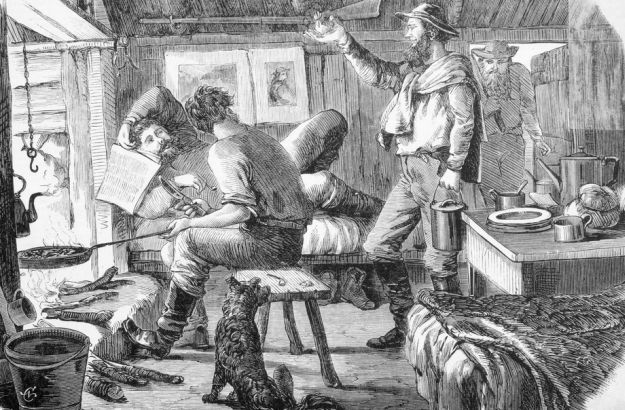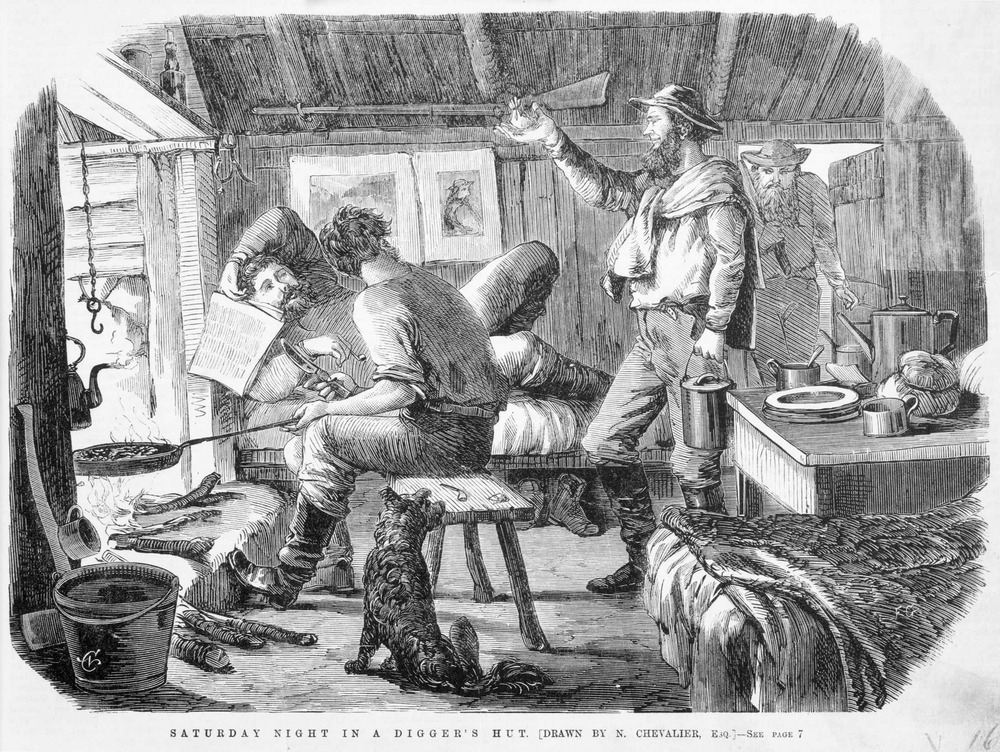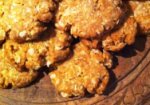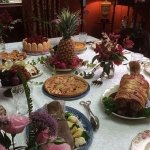While we’ve been dishing up small tasty morsels about food in colonial Australia, local Sydney author Charmaine O’Brien has created a banquet of tastes, both culinary and social, in her latest book, The Colonial Kitchen: Australia 1788- 1901. (Rowman & Littlefield, 2016). Taking us from hearth-side cookery in bushman’s huts to the most elegant dining rooms in the land, this book introduces us to homely housewives, servants struggling trying to meet the culinary needs of the squattocracy, influential cookery writers and entrepreneurial restaurateurs.
The Colonial Kitchen: Australia 1788- 1901 challenges the notion that colonial Australians were all diabolical cooks and ill-mannered eaters through a rich and nuanced exploration of their kitchens, gardens and dining rooms; who was writing about food and what their purpose might have been; and the social and cultural factors at play on shaping what, how and when they at ate and how this was represented.
I interviewed Charmaine, whose sense is that ‘colonial Australians got to enjoy their food more than their fellows in England – the food was “just like at home, but more of it, and better”…’
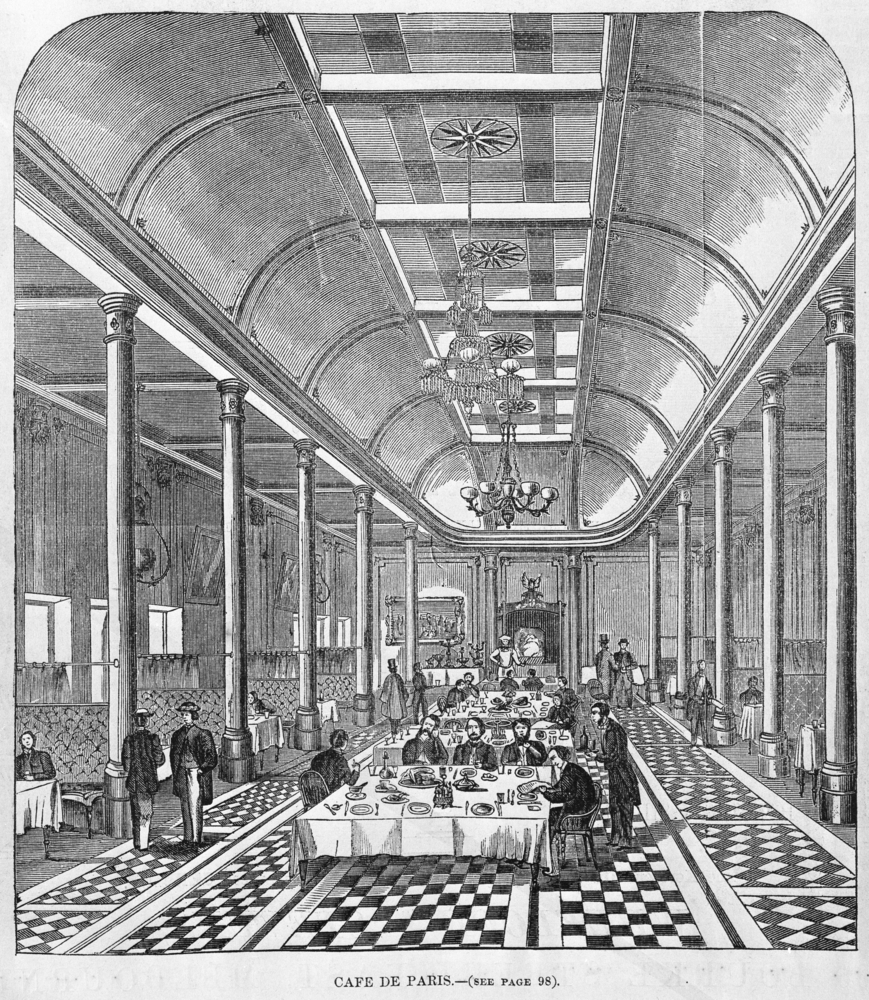
Cafe de Paris. Melbourne: Edgar Ray. Illustrated Australian mail, 1862. State Library of Victoria. Call number IAM24/05/62/109. Women were not permitted to dine in this establishment.
We tend to think of colonial Australia along the lines of explorers, pioneers, gold seekers and bushmen legends which seems in direct contrast to metropolitan life in the colonies. Were there two Australian food cultures?
“People at ‘home’ [in England] were not as interested in reading about life in Australian cities as it so closely replicated England, although they did like to read about how uncouth colonials were!
The rudimentary food of the bush was distinctive of Australia and it featured more in the type of ‘wild adventures in the antipodes’ stories that sold very well in Britain. This idea of bush life, including bush food, became enshrined in the burgeoning Australian nationalist movement [in the latter half of the 19th century] even though most Australians lived in cities and probably got their ideas about living in the bush from reading about it as well.
The other food culture that enjoined the best of city and rural eating was that of the well-off squatter.”
Your book draws – very cleverly and expansively – from colonial literary sources; what flavour do they bring to the table that other accounts might not?
“What I found in colonial novels were positive representations of colonial Australians in the kitchen and at the table; affirmations of good cooks and cookery and people enjoying what they ate; images that were generally not represented in works of history. There were certainly authors who chose to represent colonial food habits as woeful but you can often can see their prejudices at work in doing this, or that the image is a device to suit the storyline—sometimes quite humorously, which I enjoyed.”
Saturday night in a diggers’ hut 1865. N Chevalier, The Australian news for home readers. State Library of Victoria. Note the ‘topknot’ style cottage loaf on the table.
So, why do we have such an enduring perception of colonial food being ‘diabolical’?
“I think it partly stems from a general unease about our colonial past. Contemporary Australians like to consider themselves sophisticated and cosmopolitan with food: If we persist in believing our colonial forefathers were uncouth eaters and terrible cooks this allows us to imagine we are different from them and therefore do not need to shoulder any responsibility for the past.”
What can modern Australians learn from cooks from our colonial past?
“That we were not the first to ‘discover’ the pleasure of eating well: While our colonial forefathers did not have the choice of foods we enjoy today it does not mean they ate badly, in fact they probably ate much better than we imagine if we take into account they ate seasonally and locally, cooked from scratch, ate all of the animal, did not waste food, and slow cooked over wood fired stoves.”
Just one example of recipes that Charmaine offers in her book (modern redaction below) that has contemporary cache is taken from Margaret Pearson, Cookery Recipes for the People (Melbourne: Hutchinson, 1888):
“This simple recipe is a great demonstration of the possibility that colonial Australians were much more sophisticated cooks and eaters than historiographical convention allows them to be. Pearson’s recipe book is firmly aimed at the middle classes (the majority), and it sold well – which of course does not mean that anybody ever cooked from it, but there must have been interest in cooking and eating the recipes she offers.”
LEMON PICKLE
Ingredients:
6 lemons.
2 ozs of bay salt, well beaten.
[cloves].
½ oz mace.
2 oz. mustard seed.
1 quart of vinegar, boiling.
1 oz. of garlic, or shallot.
1 nutmeg, sliced.
Mode.
Take six lemons, cut in quarters, pick out the seeds, put into a jar, strew over the bay salt well beaten, and let it stand three days, covered with cloth and plate; put in cloves and mace beaten fine, and garlic or shallot, then mustard seeds bruised and nutmeg sliced; make a quart of vinegar boiling hot and pour over ingredients; cover the jar closely and tie leather over it. It will be ready for use in a week.
“I chose this recipe for several reasons:
It is delicious. Better than any Morroccan style preserved lemon in my estimation.
It is easy to make. It does not require any special skill, ingredients or equipment.
A jar of it makes a great gift. And its great to see the surprise when you tell someone its a colonial recipe
Many Australians find themselves with an abundance of lemons each year so I like to think they might have tried this to harness that abundance.”
Charmaine has been a great supporter of Sydney Living Museums over the past few years, helping us with our Colonial gastronomy programs and recipe testing from our manuscript cookbooks. Her book provides a great resource for further understanding of colonial food and cooking.

The Colonial Kitchen by Charmaine O’Brien. Rowman and Littlefield, 2016.
